Montpellier – France
On arrival in Montpellier, we were greeted by its impressive 18th-century Aqueduct, constructed in the style of ancient Roman aqueducts.
Tuesdays are market day in Montpellier when vendors set up their stalls beneath the archways of the Aqueduct, creating a dynamic and unique setting for the hustle and bustle of the produce and food market.
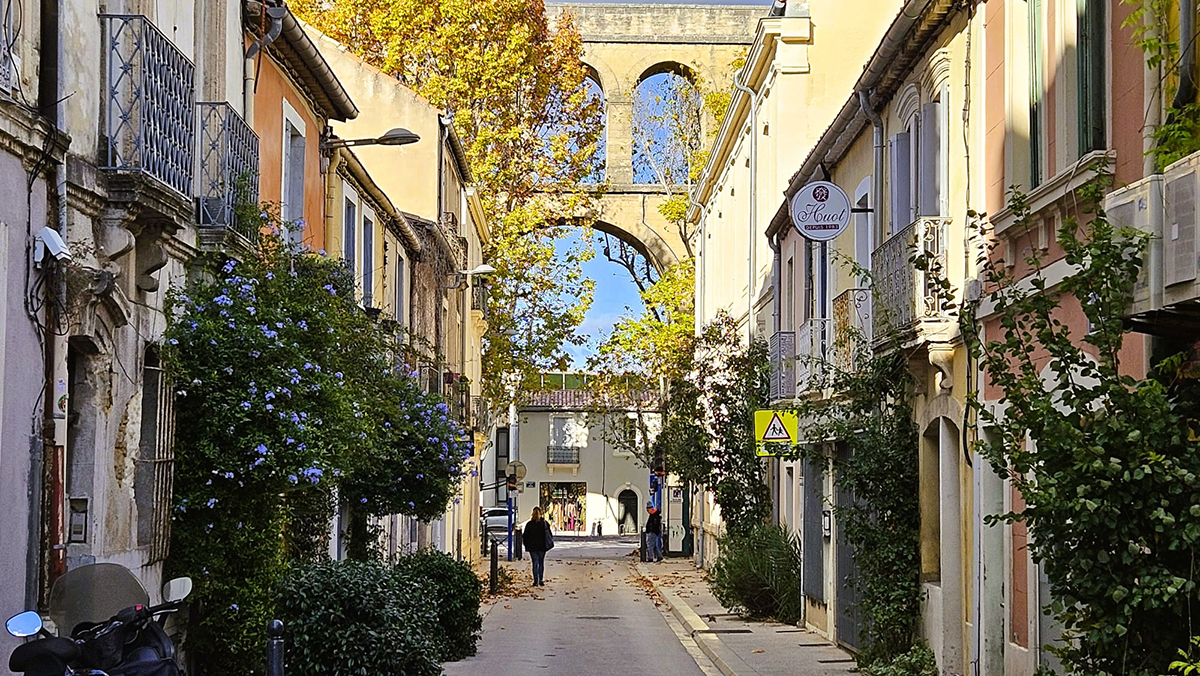 Walking through a neighbohood choc-full of charm , towards the Tuesday market.
Walking through a neighbohood choc-full of charm , towards the Tuesday market.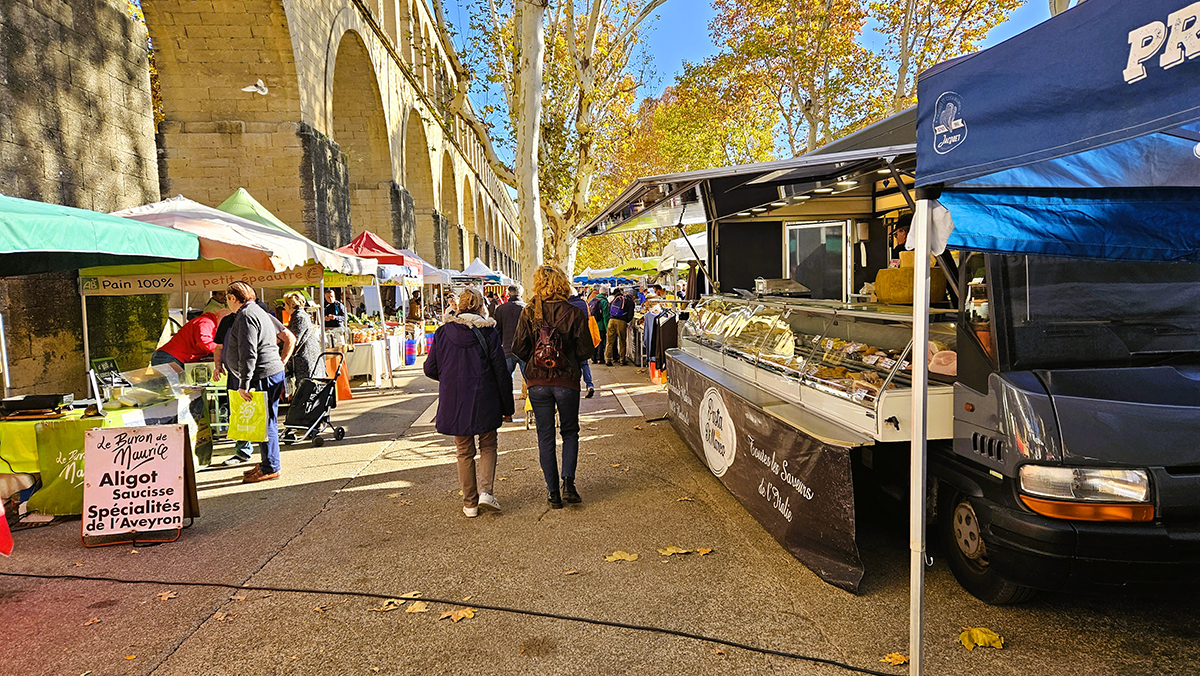
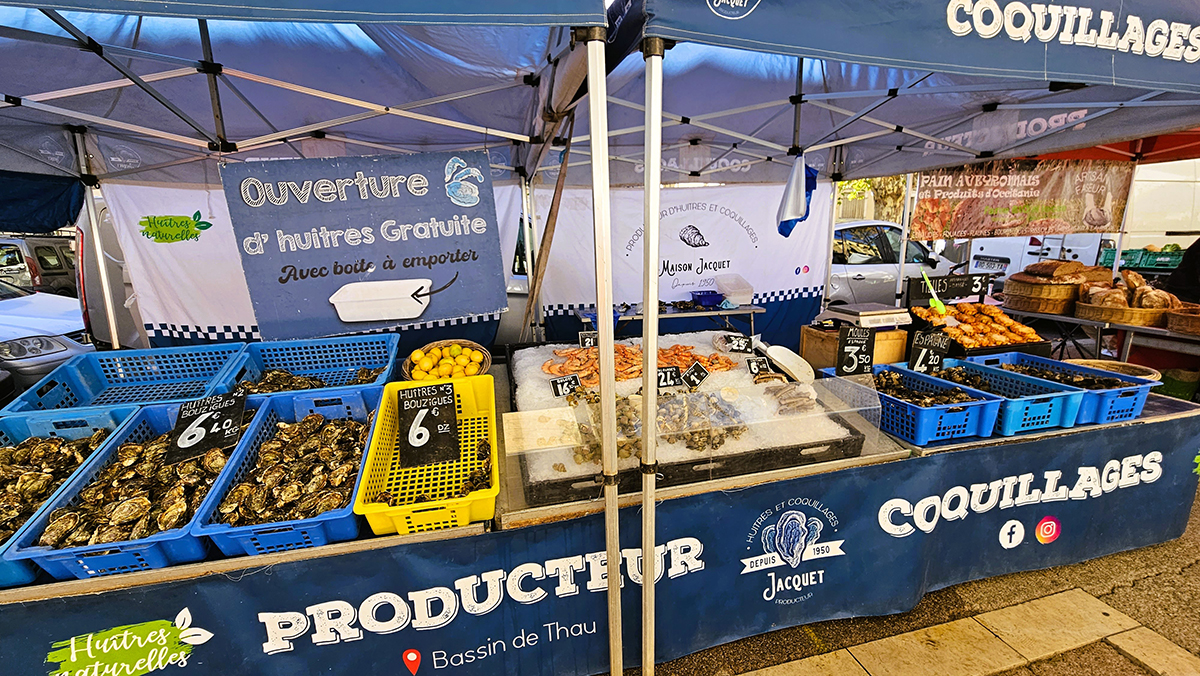
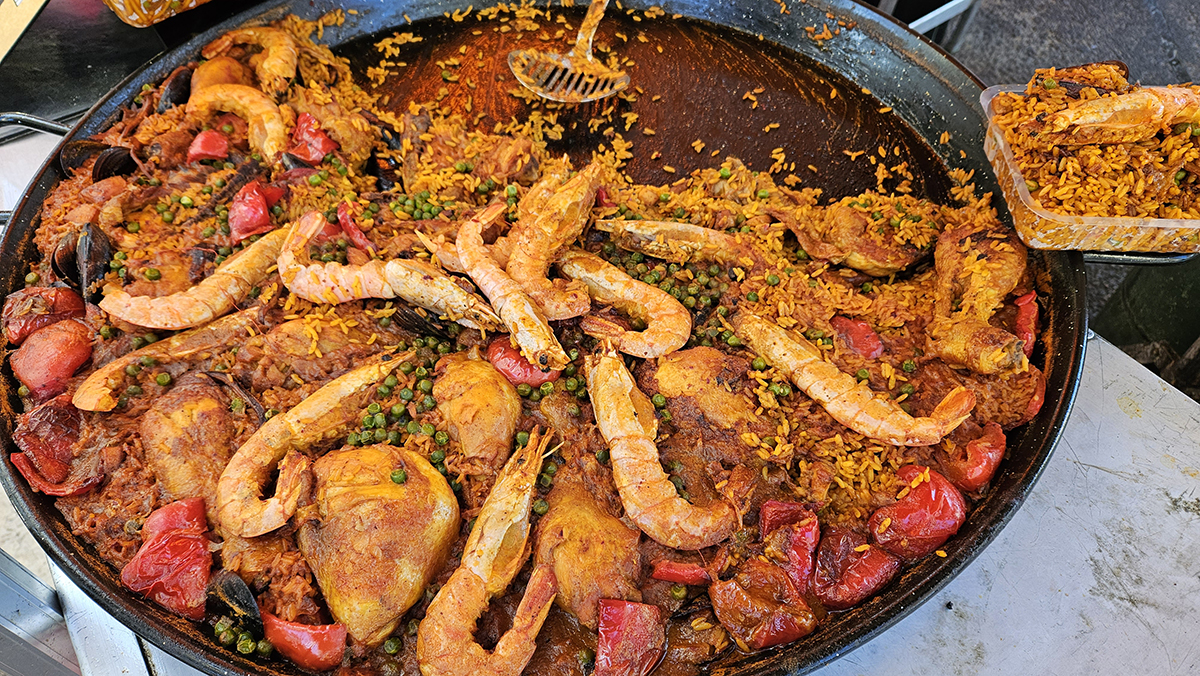
The Aqueduct consists of double rows of arches and stretches over two thousand six hundred feet (eight hundred meters). It is often referred to as the ‘Saint–Clement Aqueduct,’ as it delivers water from the Saint–Clement spring to Montpellier’s Peyrou Park water tower.
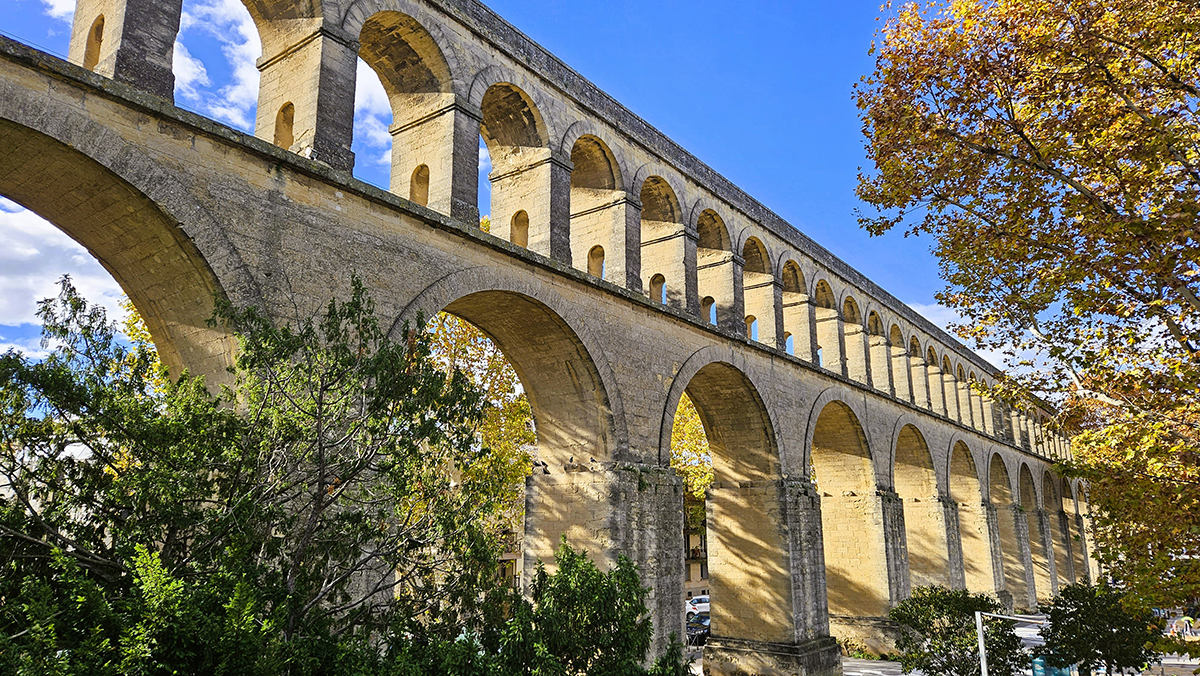
A flight of stairs leads from the base of the Aqueduct up to the expansive “Promenade du Peyrou”, where “Château d’eau”, the Neoclassical style water tower, marks the highest point of Montpellier.
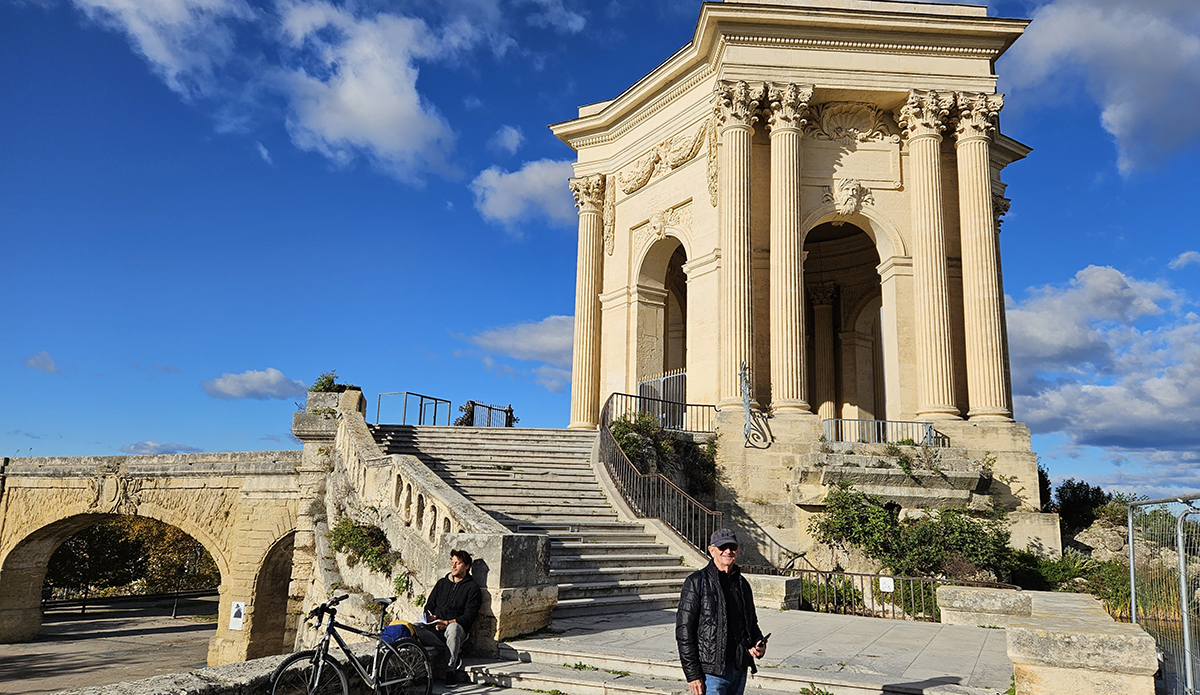
A statue of Louis XIV on horseback looking out at the landscape stands at the center of Peyrou Square.
King Louis made two rulings, one in 1775 and another in 1779, which forbade the obstruction of the panoramic views from what was then known as Royal Square. No construction could be built higher than the walls surrounding the lower walkways. This limitation continues to be respected in the city’s town planning regulations.
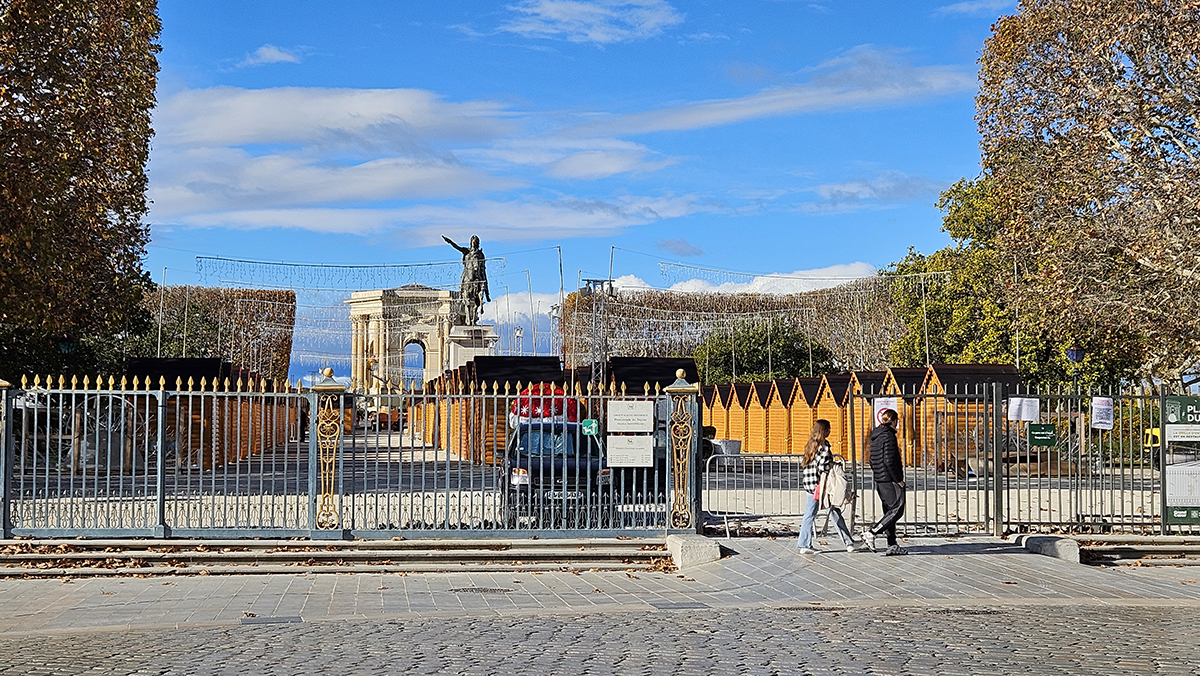
On a sunny autumn day with blue skies and a sea of drifting clouds, the three-hundred-sixty-degree views are mesmerizing. Today, the vast promenade is often the site where festivals, concerts, and a popular Sunday Flea Market are hosted.
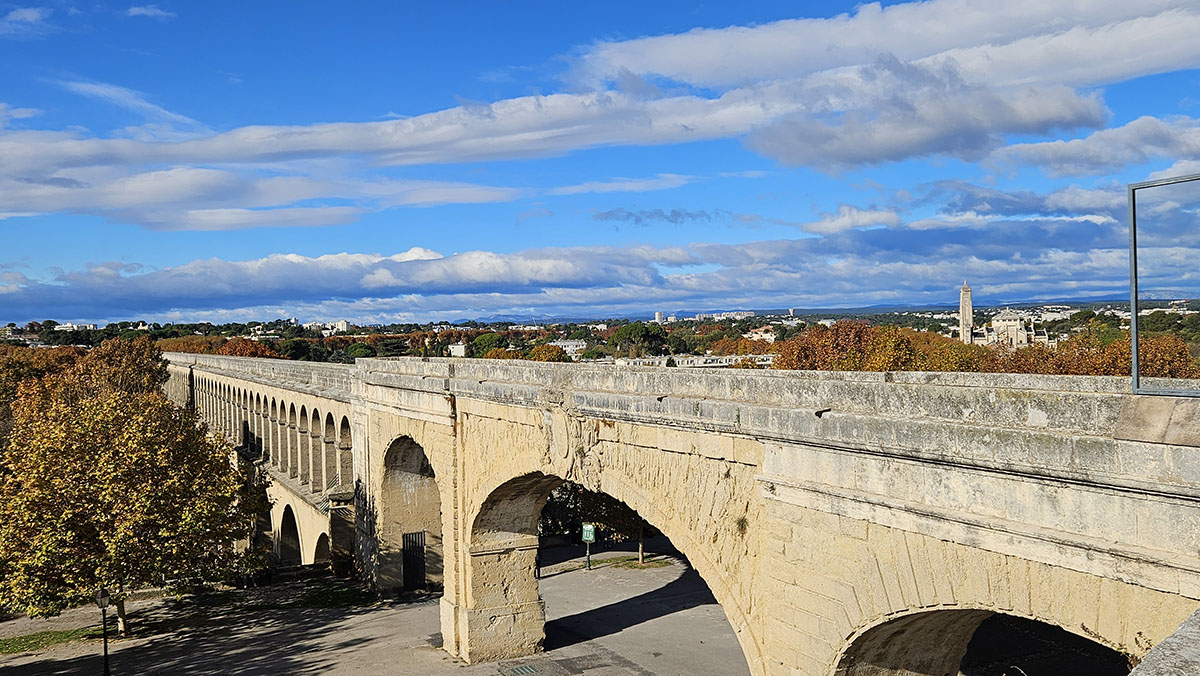
The Arc de Triomphe serves as a city gate that leads to Rue Foch, an avenue lined with luxury stores, trees, and elegant buildings, adorned with elaborate sculptures and wrought iron balconies.
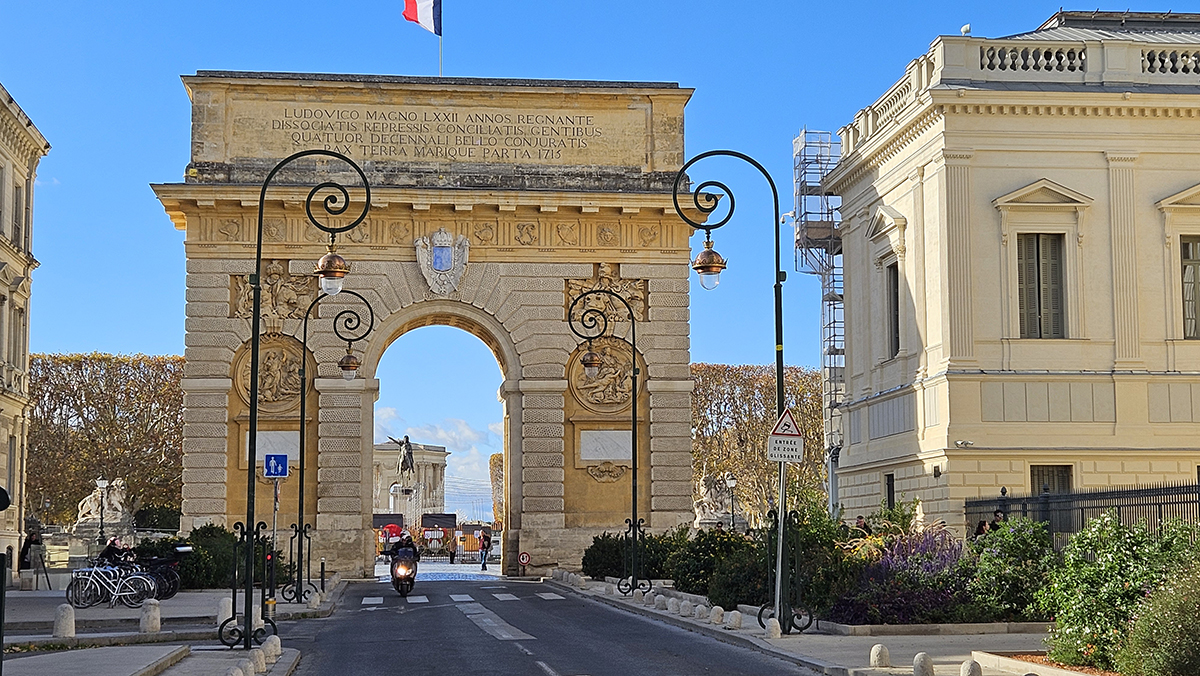
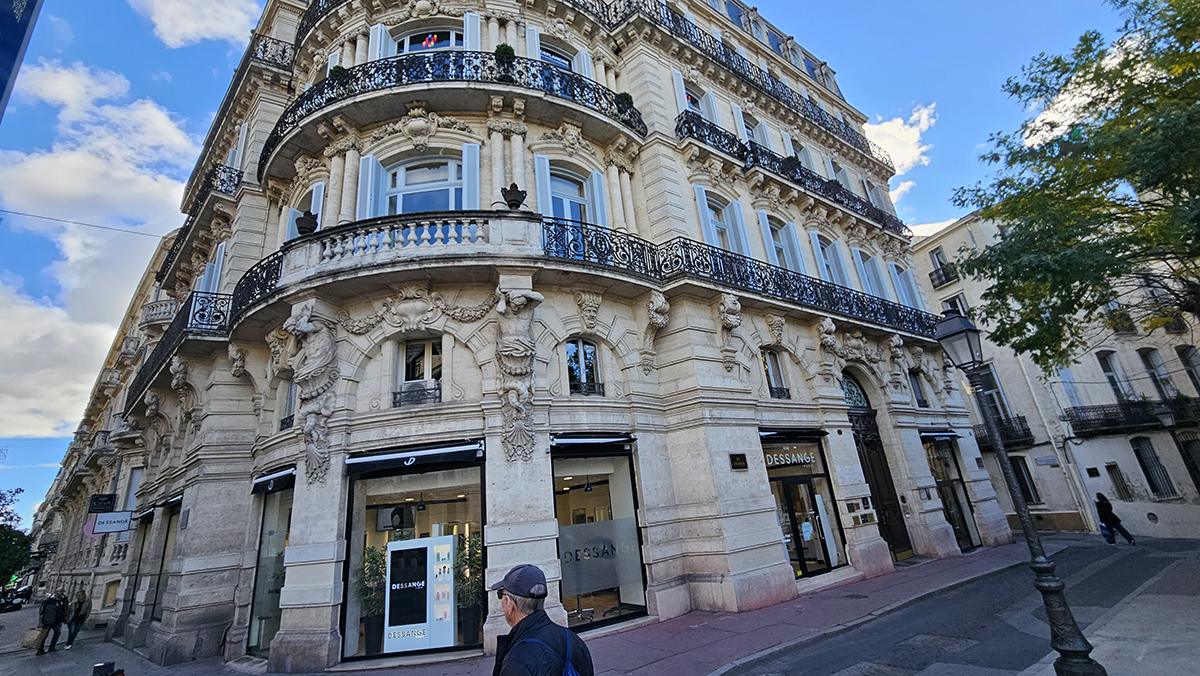
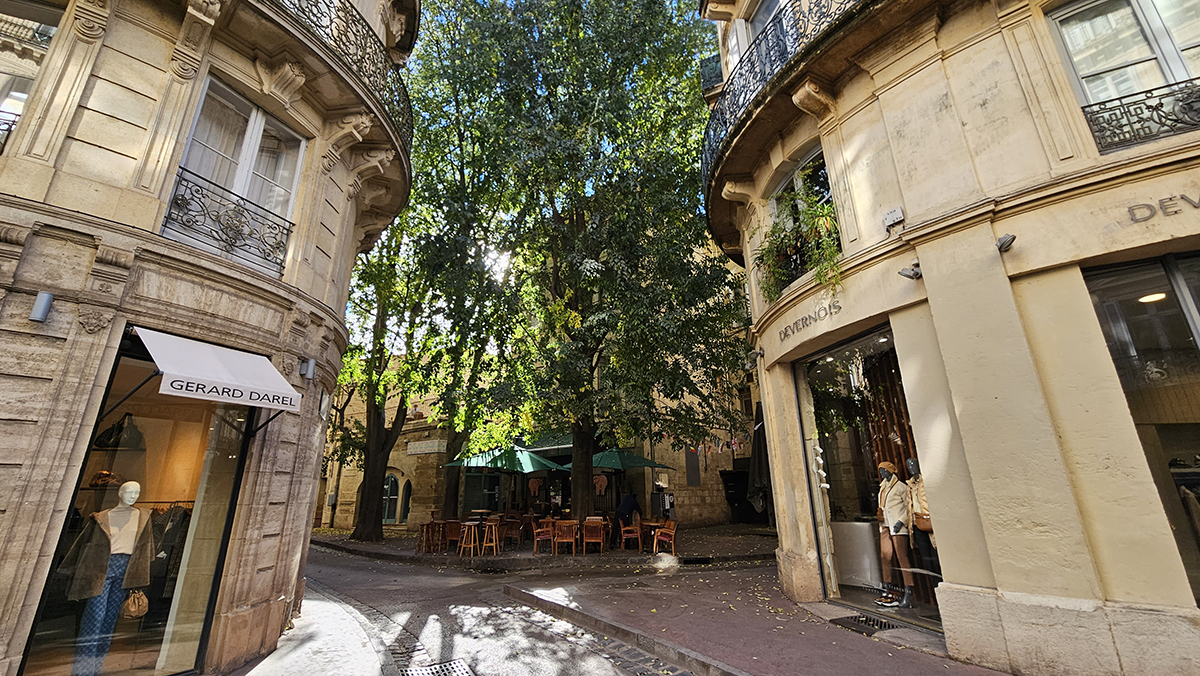
The Montpellier “Court of Appeal” – also built in the Neoclassical style – stands just a few steps from the Arc de Triomphe. Although it’s very much a functioning institution, tours can be arranged.
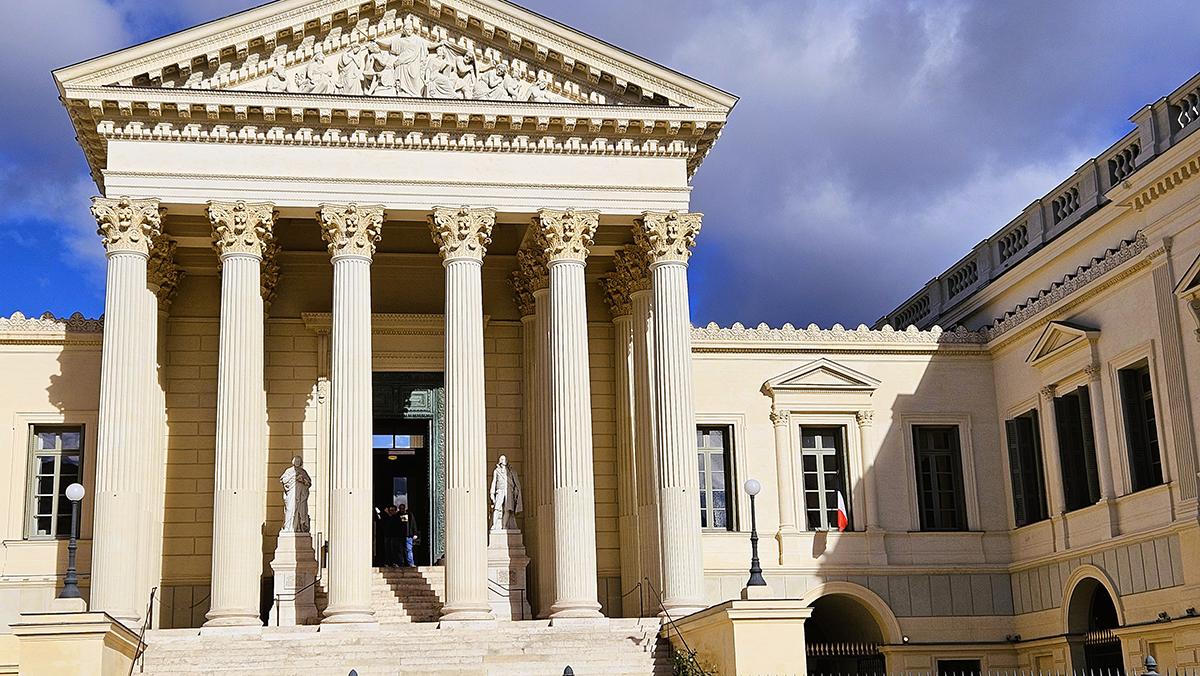
During the Middle Ages, Rue de la Barralerie – adjacent to Rue Foch – was a vibrant Jewish neighborhood.
The area was a hub for merchants in the silk trade, scholars, intellectuals, and physicians. The 13th-century Mikveh at #1 Rue de la Barralerie, in the heart of the Jewish quarter, is one of the oldest and best preserved Mikvehs in Europe.
One reaches the Mikveh via a staircase that leads down to the dressing room and then to the bath. Tours of the Mikveh and the neighborhood can be arranged.
Today, the area still retains a charming appeal. It’s populated with residences as well as boutiques, small squares, and cafés.
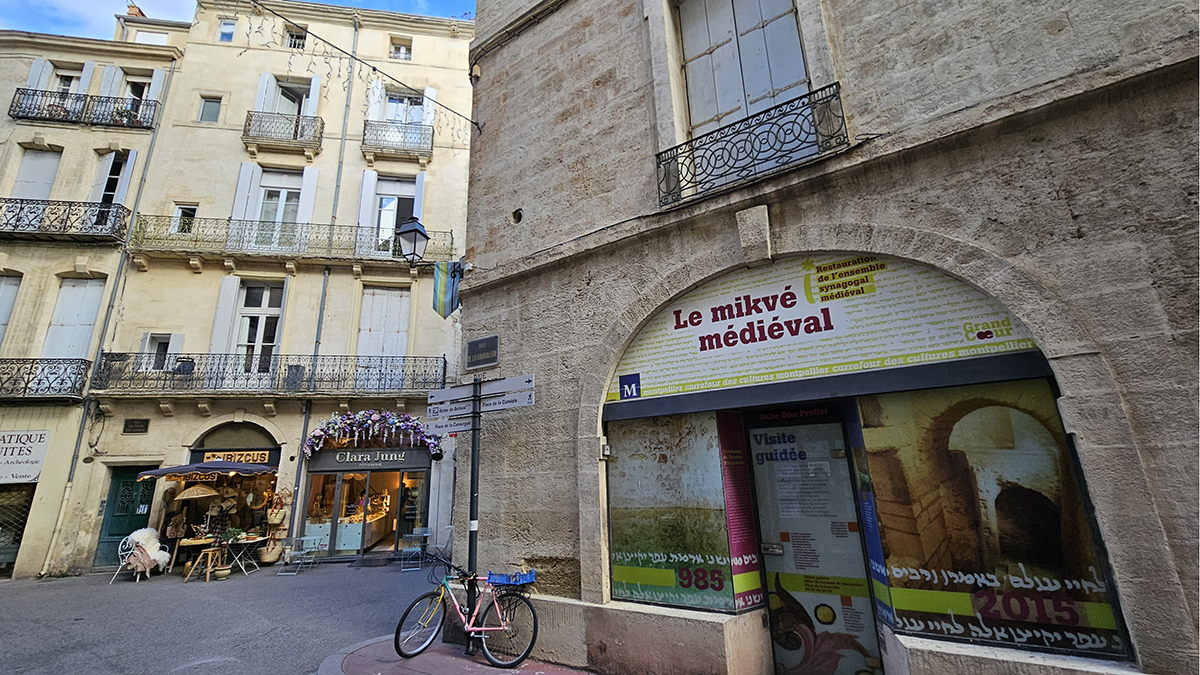
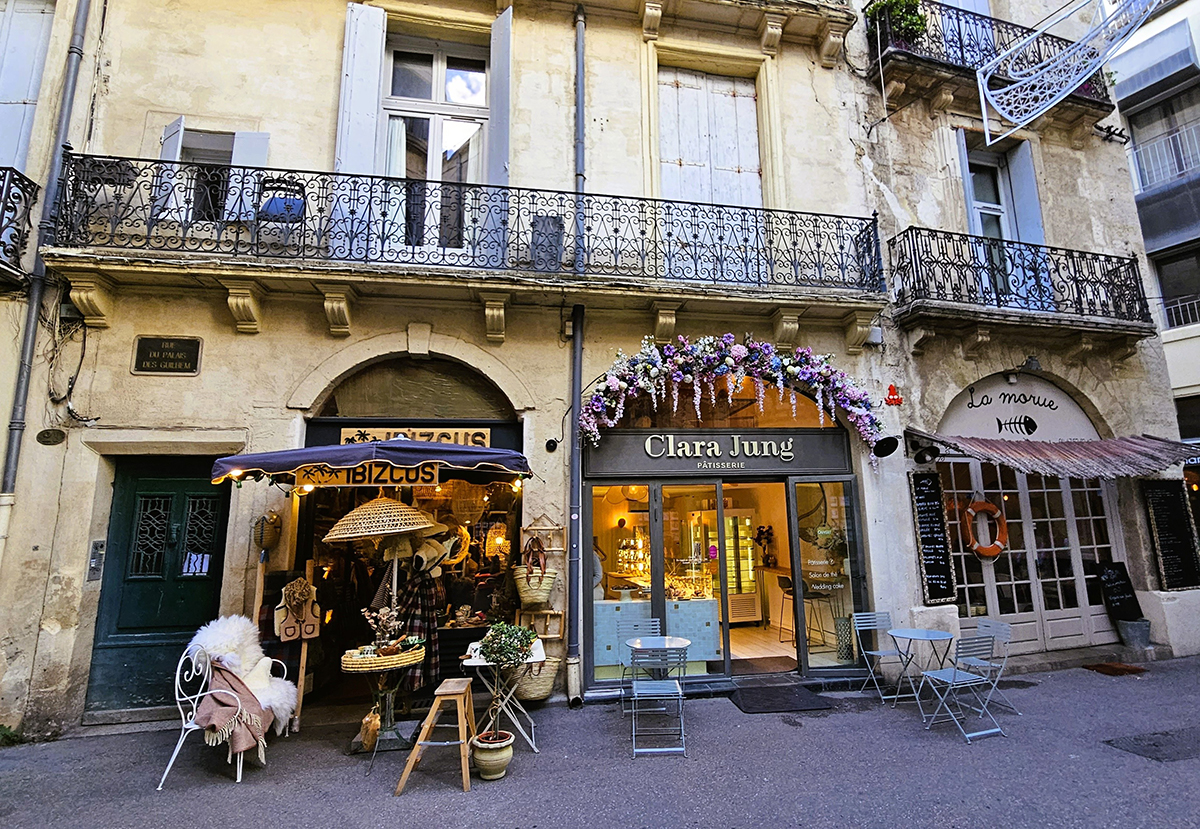
The church of St. Roch – the patron saint of Montpellier, revered for his devotion to healing the sick – is surrounded by a warren of cobbled lanes in the historic center of Montpellier. The neighborhood retains all its ancient charm, which is amplified by blending with the Montpellier of today.
It’s a great spot to rest awhile in a café and take in the dynamic vibe.
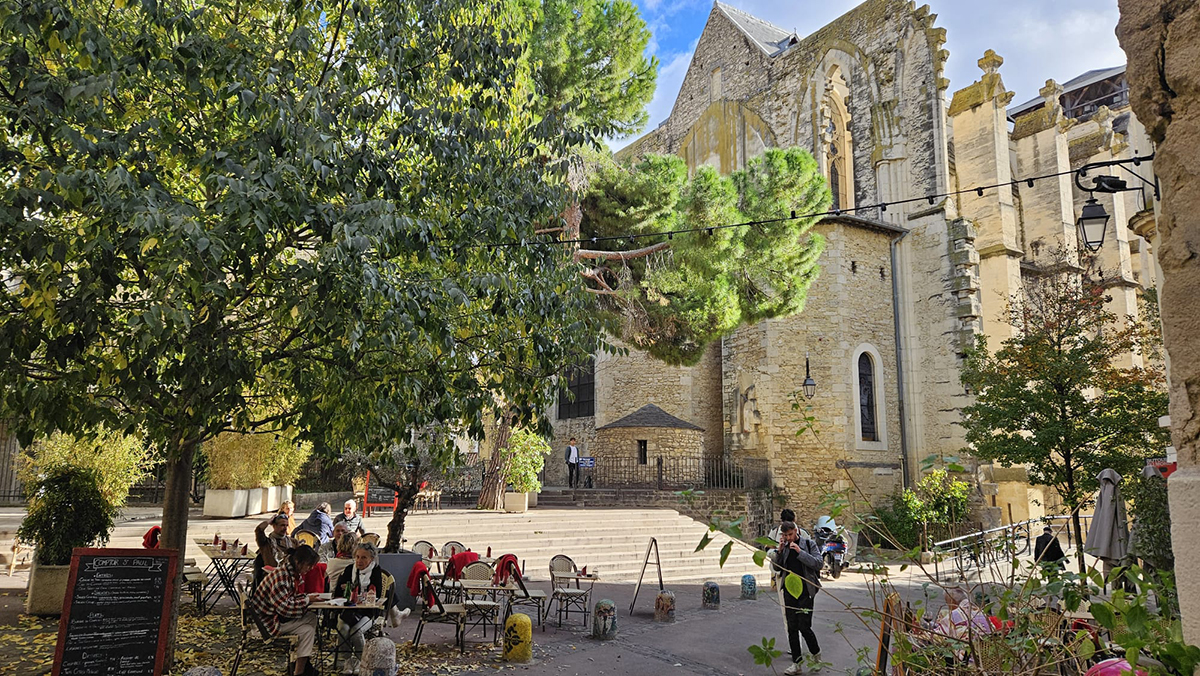
**Neoclassical architecture thrived in the mid-18th century when it revived the classical forms of Greece and Rome that emphasized simplicity, grandeur, and symmetry.
